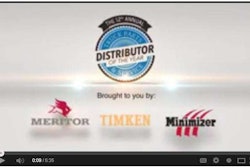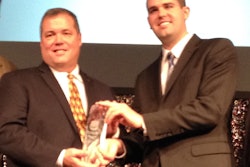When Harman Heavy Vehicle Specialists first opened in 1938, it’s safe to say the company’s founders didn’t know it would one day be positioned on one of the world’s busiest highways.
But keeping the business successful for 78 years has required a lot more than a good location. Harman HVS has thrived because it’s leaders have always been willing to evolve, says Vice President of Operations and Marketing Ian Johnston.
There’s no shortage of customers along Southern Ontario’s Kingshighway 401, where Harman’s two parts and one service facilities are found, but there’s no shortage of distributors, either. Succeeding in a congested market has required a proactive approach, and Johnston says that’s something Harman HVS takes to heart.
“We’ve always tried to do things with our future in mind,” he says.
That can be seen in everything the company is doing in 2016. Harman HVS is in the midst of a corporate revolution.
Johnston says the revolution began earlier this decade, when he and his father Jay (Harman HVS president) bought out a former partner to become sole owners of the business.
“One of the things we did [at the time] was take a long look at our long-term business strategy, and at the operational structure of the company,” he says. The duo poured over every aspect of the business, performing a SWOT analysis and evaluating the performance of the business against their goals and expectations.
Though bottom-line numbers were good, the duo found areas where Harman could improve, and have spent the past few years systematically improving them.
This is most evident in Harman’s new, substantially larger facilities.
Harman combined its Kitchener and Cambridge, Ontario, locations into one superstore in Cambridge in 2014, and is building another new facility in Woodstock, Ontario, this year. The new buildings have lowered the company’s retail count from three stores to two, but thanks to the Johnstons’ planning and development at each location, the new facilities will allow Harman to stock and distribute a higher volume of parts while achieving quicker delivery times and higher fulfillment rates than ever before.
“With the old locations some things were dictated by necessity and not efficiency,” Johnston says. “For the new facilities we’ve tried to make the work flow better, with as few steps as possible.”
The Johnston’s have taken the same approach behind the scenes, zeroing in on product lines and services with the largest growth potential and minimizing fixed costs throughout the business. Using key performance indicators (KPI) to track their performance, Johnston says Harman has developed corporate flexibility to better manage the cyclical nature of the independent aftermarket.
The company has more improvements in the works for 2017 as well. Johnston says Harman plans to roll out a customer relationship management (CRM) system for its sales team early next year, and also has plans to boost the company’s website with an online storefront and training center.
Each move is designed to add value for Harman’s customers.
“We’re focusing on a whole bunch of little things and executing those. All of those little things can add up to a big difference,” Johnston says.










